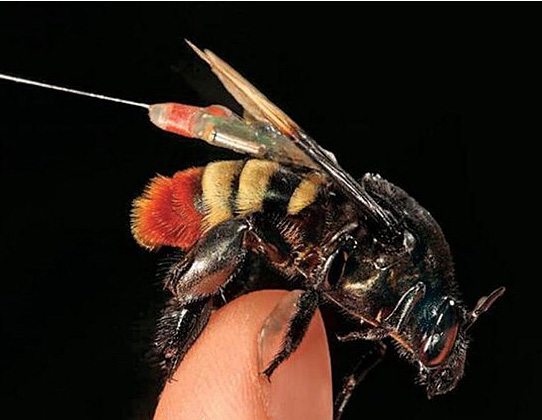The new generation of mobility called the Internet of Things (IoT) has evolved very quickly to become a ‘super brand’ covering not only mobility but smart cities, wireless meter reading and a host of other vertical market segments.
IoT started as a simple, focused market of ‘machines-to-machines’ or M2M whereby instead of focusing on ‘person to machine’, it was clear that new wireless connectivity sectors would focus on where machines, sensors or ‘things’ would communicate with other ‘things.’ A good first ‘poster child’ for M2M was wireless meter reading: water, gas and electric meters on a home or office would be modified to install a small sensor and a wireless communication module so that the value of the consumption from the meter (one machine) would be transmitted to the home office (the other machine) without any person in the loop.

That quickly grew to see many more M2M initiatives get launched. But then, the cost of the wireless modems have come down (and will continue to come down as I wrote about last week) so that people could think of other areas where a wireless modem could be applied. And, since some of these initiatives involved people (think a wireless modem in your backpack), M2M didn’t adequately describe the explosion from a few market sectors to thousands. Hence, IoT has become the handle for any and all wireless communication networks that involve ‘things’ communicating over the Internet.
I have been particularly interested in what Dr. Martin Wikelski of the Max Planck Institute in Germany is doing to take IoT to the extreme – putting wireless sensors on animals as small as a bee – that will undoubtedly uncover breakthrough understanding of the environment, climate and in some cases provide an early warning system for things such as earthquakes. He named the program the ICARUS Initiative after the Greek mythology:
The mission of ICARUS is to address such global initiatives as:
- Disaster forecast via animals, e.g. early earthquake detection & alerts
- Health and disease (Avian Influenza, Foot and Mouth Disease, Ebola)
- Ecosystem services (pollination, pest control, seed dispersal)
- Conservation (dispersal & conservation of endangered species)
- Global change (habitat shifts, desertification, glacial melts)
- Discovery of unknown migrations
The core part of ICARUS is to use a vast deployment of a large array of sensors connected wireless to a network or, eventually, to a new generation of small satellites which, in turn, allow for large data to be analyzed on servers in the Cloud.
How does ICARUS work?
The ICARUS network uses a vast deployment of very small sensors for flying species such as birds and bees and larger sensors on barnyard animals such as horses, cows and sheep. The entire ICARUS network is composed of:
- Data collection in black-box-loggers on individual small animals including GPS, 3D-acceleration and other sensors
- Autonomous energy supply (solar cell in combination with rechargeable batteries)
- On board processing, data reduction, and selection of relevant data
- Transmission of small data packages to a low earth orbiting (LEO) satellite (about 400MHz transmission using three receiving antennas)
- CDMA coding of signal and data
- Decoding of signal on board of satellite, downlink to ground station (15kg for receiver at 110W)
- Data distribution and storage via Movebank
You can quickly see that ICARUS will generate a lot of data and that most of the sensors will transmit wirelessly their collected information directly to satellites. This will enable them to track flocks of birds over great distances and bees over shorter distances.
Next steps for ICARUS
ICARUS is in the early stages of deployments. The upcoming milestones are:
- Fall 2017 – ICARUS will fly experimentally on the International Space Station (ISS)
- 2017-18 – Testing phase with pre-selected projects
- 2019 – Opening ICARUS for the scientific community
The German and Russian space agencies have provided Wikelski’s five full-time staff and 50+ students from 37 countries $13 million to build and launch the satellite and deploy sensors around the globe. It seems almost limitless what kind of research and in-depth understanding can come out of this initiative – from farming habits to climate change to analyzing fisheries and providing better early warning to disasters.
Strategic insights
The ICARUS project demonstrates an example of a ‘pure play’ IoT initiative. Eventually, ICARUS will have tens of thousands of animals connected so that insightful studies can be made. Even if ICARUS can just provide advanced warnings for earthquakes, it would be justified. But, the opportunities for doing so much more is clear. I suspect that we will realize some benefits that we can’t predict today.
Naturally, there is a ‘big brother’ concern about how this technology might eventually track people, but that seems far off and likely will be prevented through legislation. It should be exciting to see some published reports by ICARUS and see how it has been able to help humanity in a number of ways.
Dr. Gerry Purdy is Principal Analyst with Mobilocity LLC. He writes a weekly column called the Mobilocity newsletter. He is widely quoted in the press, and has appeared on a number of TV news shows such as MSNBC, Fox Business and CNN regarding mobile and wireless products. Purdy has a Ph.D. from Stanford University, an M.S. From UCLA and a B.S. from the University of Tennessee. Contact: Gerry.Purdy@aotmp.com, mobile 404-855-9494.

